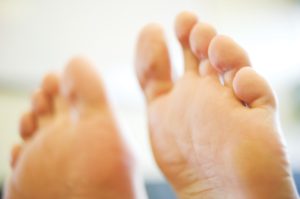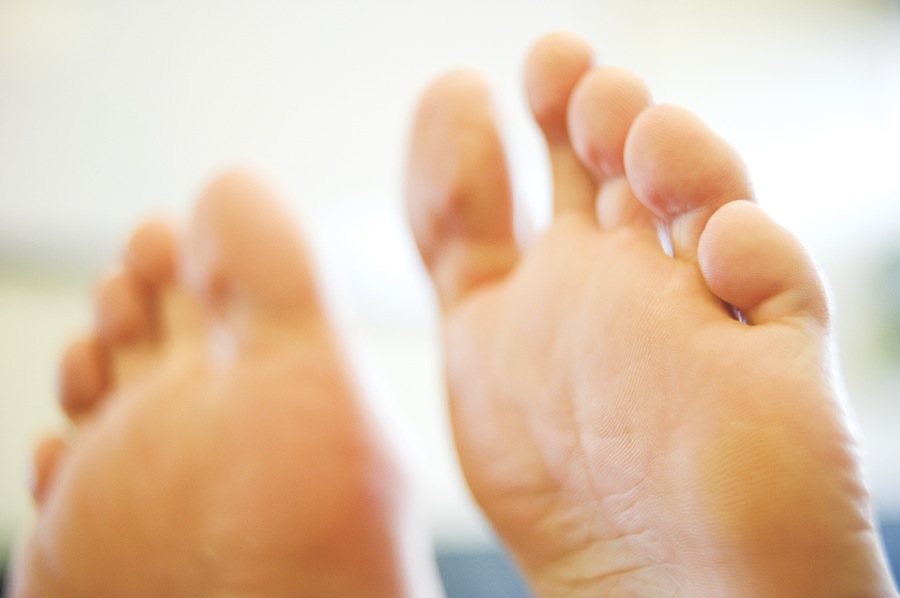Vincent Rahming
Sports & Health Editor
The feet are one part of the human body that stays hidden throughout the day, as they stay tucked nicely into a pair of sneakers or leather shoes. Most people tend to forget that the foot is an excellent communicator and sometimes there are signs right in front of us when something is wrong.

“You can detect everything from nutritional deficiencies to diabetes just by examining someone’s foot,” says Dr. Patrick Spinelli, a podiatric specialist at Doctors Hospital in Nassau, Bahamas.
A pair of feet contains 52 bones – nearly a quarter of the 206 bones of the human body. Each foot alone has 33 joints, 100 tendons, ligaments and muscles as well as a plethora of nerves and blood vessels connecting to the spine, heart and brain.
“I’ve seen quite a few patients that come into my office and tell me that they’ve experienced pain for weeks, and in some cases, months, before they realize there is a problem,” Dr. Spinelli explains. “You don’t ever want the pain to be too severe that you cannot walk, because that’s when you have a serious issue.”
In many cases when pain is overlooked, it leads to unexpected consequences. Untreated foot pain can often lead to reduced mobility, weight gain or a shift in balance, increasing the chance of falling, and in turn further injury.
It’s easy for anyone to be on their feet every single day and not be fully aware of discomfort. Whether you’re wearing high heels or running up and down a basketball court or track field, always pay attention to your feet.
It’s easy for anyone to be on their feet every single day and not be fully aware of discomfort. Whether you’re wearing high heels or running up and down a basketball court or track field, always pay attention to your feet.
Here are three signs to be aware of:
Sore Toe Joints
Possible cause: Rheumatoid arthritis, a degenerative joint disease which is often first felt in smaller joints such as toes and the knuckles of the hands.
Other symptoms: Swelling and stiffness which normally accompanies the aches and pains.
Taking action: Visit a physician to determine the cause of any joint pain. There are many medications and therapies for rheumatoid arthritis that can minimize pain and preserve normal functions. However, an early diagnosis is important to avoid permanent deformity.
Cold Feet
Possible causes: Really cold feet can mean nothing, but it can also indicate a thyroid issue. Older women who get cold feet may have an under-functioning thyroid, the gland that regulates temperatures and metabolism. Poor circulation is another possible cause.
Other symptoms: Hypothyroidism symptoms tend to be subtle and are associated with many disorders (fatigue, depression, weight gain and dry skin)
Taking action: Wearing special insulated socks for warmth can assist with circulation.
Pain in the Heel
Possible cause: Plantar fasciitis, the inflammation of a band of connected tissue (fascia) running down to the bottom of the foot (plantar). This is abnormal straining of the tissue beyond its normal extension.
Symptoms: The pain normally begins from the very first steps of the day and persists, and sometimes intensifies, throughout the day. For the most part, it’s prevalent in one or both heels, but can also be felt in the arch or back of the foot. Insufficient support, running and jumping can also cause this to occur. If you have gained weight and stand for hours at a time on hard surfaces without proper shoes, this can also be a factor.
Taking action: If the pain persists for more than a few weeks or worsens, have it evaluated by a podiatrist or foot specialist. Wear shoes with a strong supportive arch until you get further advice and treatment, which may include anti-inflammatory drugs and shoe inserts.
What your feet can say about your health


